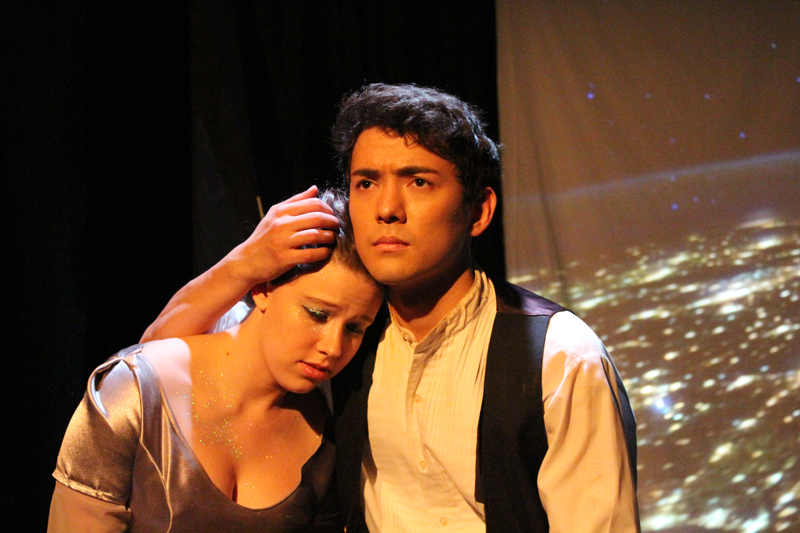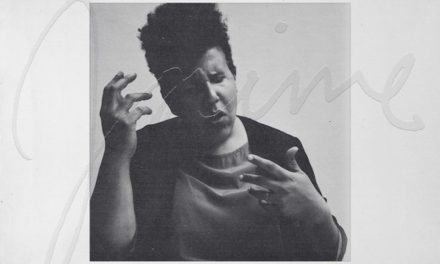It’s a pretty big endeavor to tell a tale as striking and fantastical as “Stardust” within the confines of a theater. But Starving Artist Productions (SAP) tried it – and I’m glad they did.
Based on the 1999 Neil Gaiman book of the same name, which was later made into a film starring Claire Danes and Michelle Pfeiffer, SAP members had a large task set before them in adapting that language and grandeur to a black-box theater performance. The production premiered on Thursday, Oct. 31, and will run through Sunday, Nov. 10 at the Black Box Theater in the Burlington Road Building.
College junior Ian Trutt was the man leading the effort, and for the sheer success of his adaptation, Trutt deserves credit. The original novel by Gaiman clocks in at 256 pages, and the film had a $70 million budget to work with. So taking on that ambitious of a story is impressive in and of itself.
And it’s a pretty epic journey: Set in the magical town of Wall, 17-year-old Tristran (played by College freshman Aaron Freedman) embarks on a trek to retrieve a fallen star to give to the object of his affection, the beautiful – and soon-to-be-engaged – Victoria Forrester (College junior Katie Donovan). But the star turns out to be, well, a girl. Yvaine (College freshman Danielle Hopkins), is her name, and she’s just crashed from the great beyond. Tristran captures Yvaine with the intent to take her back to Victoria, but along the way they run into a murderous witch, sky pirates and a multitude of enchanted objects.
It’s a story about bravery. It’s about making things happen for yourself, making the best of circumstances and learning not to let the bad spoil the good.
So I really, really wanted to like “Stardust.”
And don’t get me wrong, I did. It just didn’t strike me as, well, stellar.
There were a lot of elements of the show that definitely render “Stardust” five dollars well-spent. All the characters (and the performers behind them) were incredibly charming, and if not lovable, then at least entertaining – from leading man Tristran to the horrible, deadpan-hilarious Humphrey (played by College sophomore Joshua Young).
SAP excelled on visual effects: two projector screens illuminated the stage, depicting the earth as seen from above, the stars as seen from below and everything in-between. Performers often stood behind the projections, speaking as the audience could only see their silhouettes moving.
The accompanying music was delightful. SAP did away with clichéd cheesy, string-dominant accompaniment, instead opting for one live musician. College senior Teresa Findley spent the entirety of the play lounged against the edge of the stage, strumming her guitar and humming bluesy, folksy tunes that added an element of slickness and ease to the moments transpiring onstage.
But I think that was my main grievance about the show: there were all these incredible individual elements, but they just didn’t seem to blend. “Stardust” generated a great deal of sparks, but no fire.
The fight scenes, though well-choreographed, were hard to get behind, since we knew all too well that they were fake. Azfar Haq’s character “The Stranger,” an odd man with a bird-shaped face, shone with moments of humor and attempts at life advice, but his awkwardness quickly became over-the-top.
And while individual scenes held lessons, charm and genuine character development, they seemed to hold those elements separately. It was hard to follow one unifying theme or meaning of the play when the plot seemed to jump around so arbitrarily, fixating on different messages in each moment.
Trutt wrote in the program notes about how easy it is to forget moments of bravery, but fear stays with us much longer.
“This performance is dedicated to everyone fighting for a better world,” Trutt said.
This was a pretty cool idea. But beyond a couple scattered lines concerning battle and inner courage, the message seemed lost. Rather, the show seemed to be about love. And about fate, and circumstance, and just plain old magic. The ride of “Stardust” certainly was magical, from the contagious humor that flooded the theater to the tidbits of life lessons acquired along the way. It spawned plenty of stardust – just not the star itself.
– By Emelia Fredlick
Photo courtesy of Mark Spicer
The Emory Wheel was founded in 1919 and is currently the only independent, student-run newspaper of Emory University. The Wheel publishes weekly on Wednesdays during the academic year, except during University holidays and scheduled publication intermissions.
The Wheel is financially and editorially independent from the University. All of its content is generated by the Wheel’s more than 100 student staff members and contributing writers, and its printing costs are covered by profits from self-generated advertising sales.






congratulations for the beautiful text
como reconquistar http://www.outrachance.com.br/